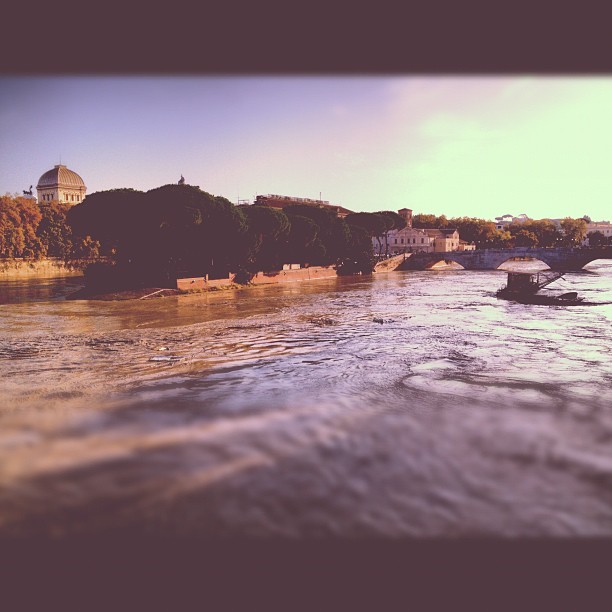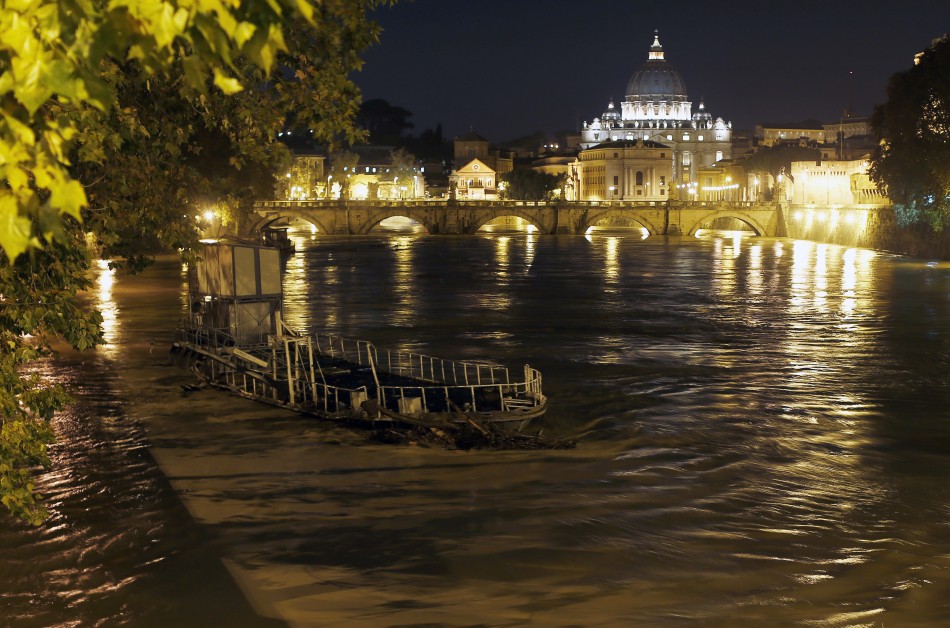Italy Floods: Rome Threatened as Tiber Bursts its Banks [PHOTOS]
Rome's river Tiber is to reach 13 meters. Five people died in the floods
Italy is counting the cost of a wave of floods which have engulfed the country from Venice to Rome, leaving five people dead.
The heavy rain has now abated but security alerts remain in place, with several rivers in the Tuscany, Umbria and Lazio regions swollen.
In Rome the Tiber is expected to reach its highest level - 13 metres - on Wednesday. Some areas of the capital are already flooded after the river and its tributary Aniene burst their banks.
During the night three river barges were washed away on the Tiber stream and crashed on Rome's famous Milvio Bridge, as the water was too high for them to pass under it.
Some areas of the capital have been closed to traffic due to the flooding.
Meanwhile, the overflowing waters have covered Tuscany in mud. Electricity has been restored in the city of Albinia, after the city was submerged by two meters of water that caused power cuts to 700 families and the evacuation of 800 people.
Yesterday three employees of Italian Energy Company ENEL were killed as the bridge on which they were travelling collapsed under the pressure of the surging Albegna River, next to the ancient hamlet of Marsiliana d'Albegna.
Speaking to the Guardian, Italian meteorologist Mario Giugliacci warned that the glut of floods which have hit the country over recent years could be the result of climate change.
"The Mediterranean has warmed up by 1C to 1.5C in the last 20 years, meaning that Atlantic weather fronts passing over it absorb more vapour and more heat, which means more energy. And that means ever more violent storms and more rain when the fronts hit Italy," he said.










© Copyright IBTimes 2025. All rights reserved.





















